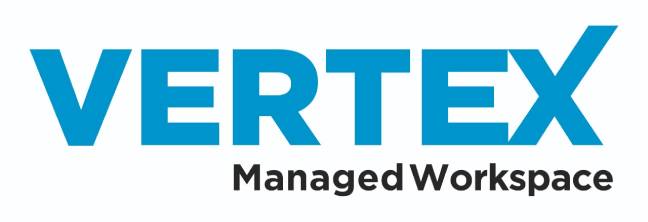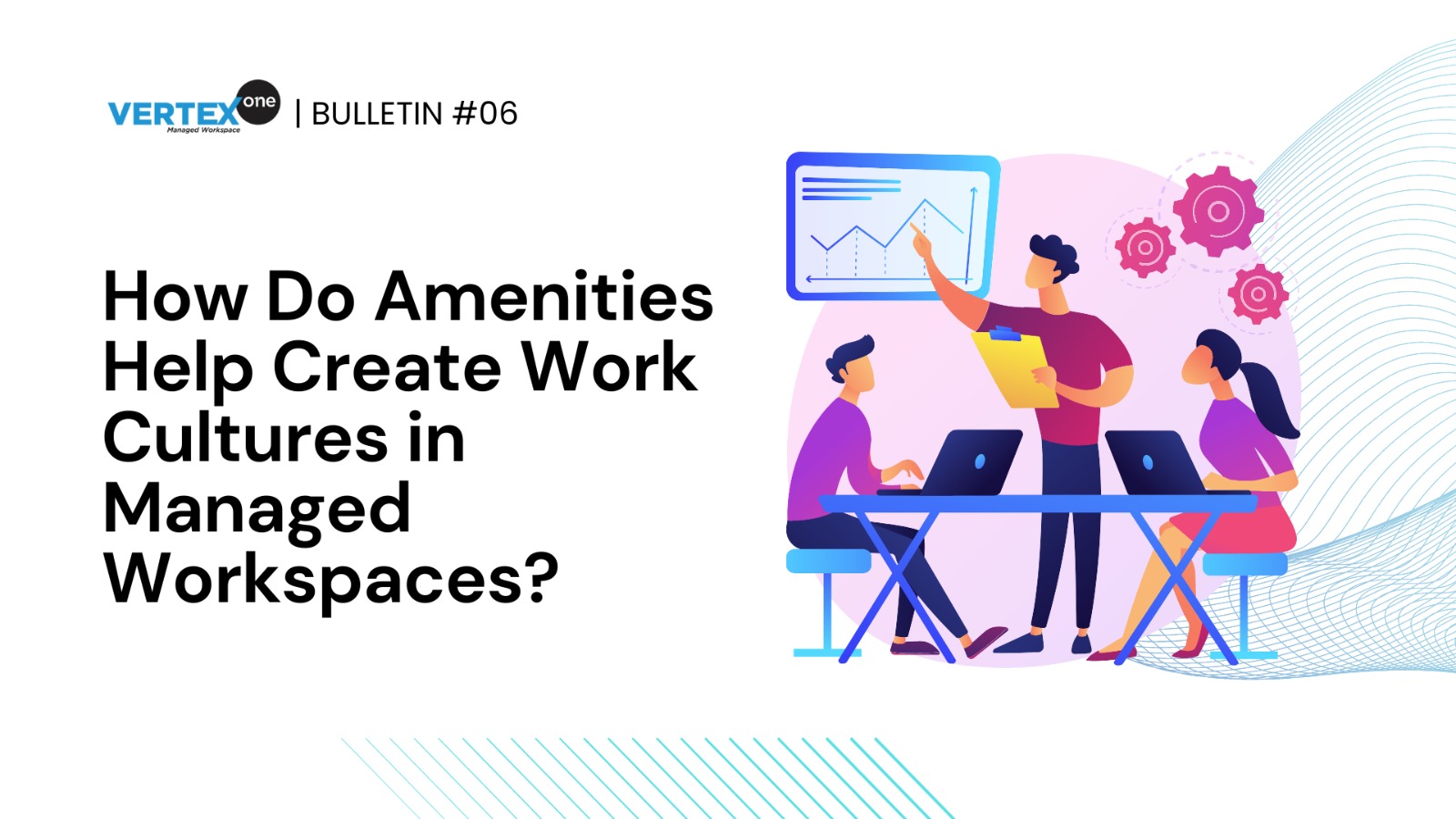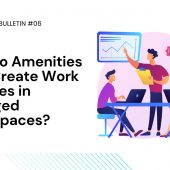Creating a conducive work culture in managed workspaces involves more than just providing desks and office supplies. Amenities play a crucial role in shaping the work environment and can significantly impact the overall work culture. Here’s how amenities contribute to cultivating a positive work culture in managed workspaces:
- Employee Well-being and Productivity:
– Health and Wellness Amenities: Facilities such as on-site gyms, wellness rooms, and recreational spaces contribute to employees’ physical and mental well-being. This, in turn, boosts morale and productivity, creating a positive work atmosphere.
- Collaboration and Networking:
– Common Areas and Lounges: Spaces designed for casual interactions encourage spontaneous collaboration among employees. Informal discussions and idea-sharing in common areas foster community, strengthening team bonds and promoting a collaborative work culture.
- Work-Life Balance:
– Flexible Workspaces: Offering amenities like flexible workspaces, hot desking, and remote work options allows employees to balance their professional and personal lives better. This flexibility contributes to a healthier work-life balance, reducing stress and enhancing job satisfaction.
- Learning and Development:
– Training Facilities and Resources: Managed workspaces that provide access to training rooms, workshops, and educational resources to support employees’ continuous learning and development. This emphasis on growth contributes to a culture of innovation and adaptability.
- Technology and Connectivity:
– High-Speed Internet and Tech Infrastructure: Seamless technology and high-speed internet are fundamental in today’s work environment. Reliable tech infrastructure ensures that employees can work efficiently, promoting a culture of technological competence and innovation.
- Inclusivity and Diversity:
– Inclusive Spaces: Amenities that cater to diverse needs, such as lactation rooms, prayer rooms, and accessible facilities, contribute to creating an inclusive work environment. This fosters a sense of belonging and acceptance among employees, promoting diversity in the workplace.
- Recognition and Celebration:
– Event Spaces: Areas designated for events and celebrations enable teams to recognize achievements, milestones, and special occasions. Celebratory events contribute to a positive work culture by fostering a sense of camaraderie and appreciation.
- Environmental Sustainability:
– Green Spaces and Eco-Friendly Initiatives: Amenities that support sustainability, such as green spaces, recycling programs, and energy-efficient practices, resonate with employees who value corporate responsibility. This can contribute to a culture of environmental awareness and responsibility.
- Stress Reduction and Relaxation:
– Recreation Areas: Providing spaces for relaxation, such as game rooms or outdoor seating, allows employees to unwind during breaks. This helps reduce stress levels, contributing to a more relaxed and positive work atmosphere.
- Community Engagement:
– Networking Events: Organizing networking events within the managed workspace encourages community engagement. Employees connecting with professionals from other companies can lead to the cross-pollination of ideas and the formation of a broader professional network.
Amenities in managed workspaces play a pivotal role in shaping the work culture by prioritizing employee well-being, fostering collaboration, supporting learning and development, and promoting a sense of community and inclusivity. A well-thought-out amenities package can contribute significantly to the overall success and positive vibes within a managed workspace.






